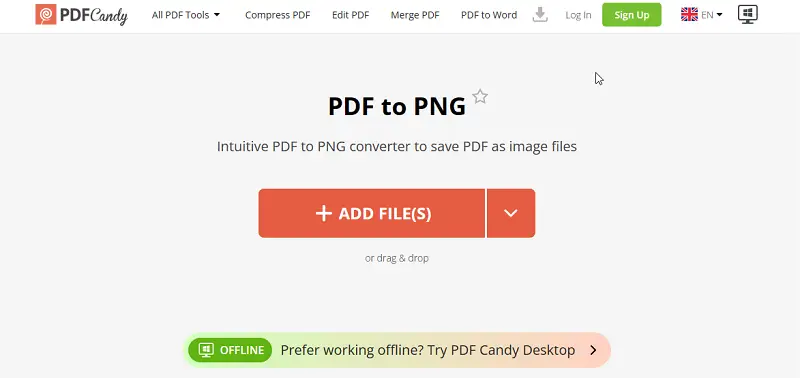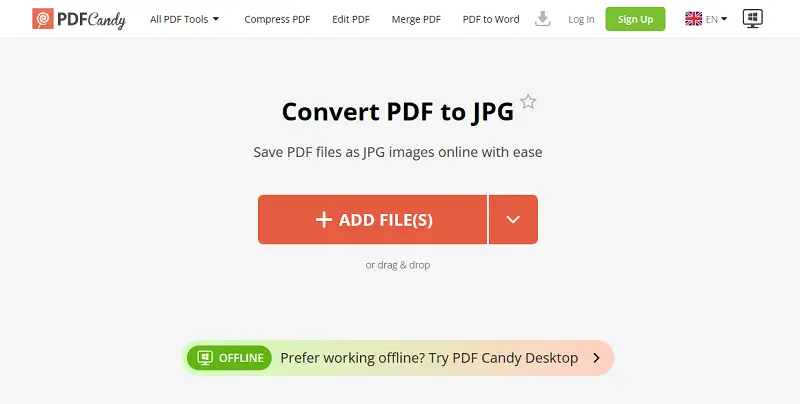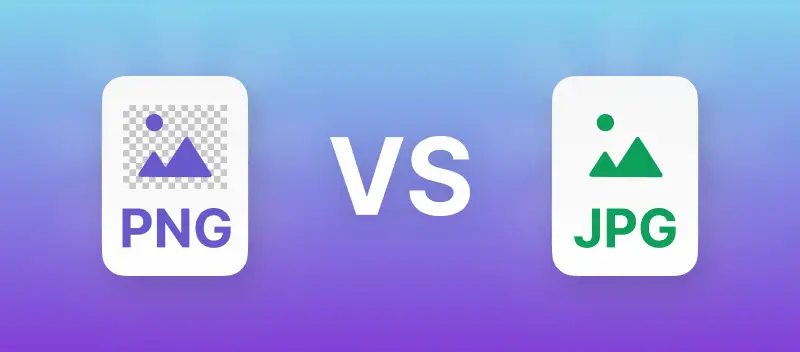Deciding between PNG and JPG formats can be a pivotal choice when it comes to handling digital images. Both formats have their own strengths and weaknesses, catering to different needs and preferences.
In this article, we delve into the details of JPG and PNG, exploring their features, use cases, and the factors to consider when choosing between them.
Whether you're a graphic designer, web developer, or simply someone looking to optimize image quality and file size, understanding the distinctions between PNG and JPG is essential for achieving your desired outcomes in the digital realm.
What is a PNG file?
PNG is an acronym for Portable Network Graphics. This is a raster or bitmap format, where images are composed of bits of information that translate into pixels on a screen. These pixels collectively generate the colors that form the visual representation.
Introduced in 1995, initially under the name PBF (Portable Bitmap Format), PNG marked a significant advancement in picture formatting.
In contrast to the prevailing GIFs of the time, which were limited to 8-bit color depth, PNG offered 24-bit. This enhancement allowed for a broader spectrum of hues and shades, resulting in higher-resolution pictures.
Over the years, PNG has evolved to support even higher color depths, ranging from 48 to 64 bits.
What is a JPG file?
JPG, an abbreviation for Joint Photographic Experts Group, represents an image format that precedes PNG, having debuted in 1992. However, its conceptualization traces back to the mid-1980s. Alternatively known as JPEG, a JPG extension aims to diminish file size.
The essence of the JPG format lies in its compression technique, striving to condense the voluminous data present in images. By averaging out color information and minimizing data repetition, JPG achieves this reduction.
This compression, termed lossy compression, enables JPG files to efficiently manage complex image compositions, such as photographs, while simultaneously reducing their file sizes.
PNG vs JPG: What is the main difference?
JPG and PNG images share numerous similarities. Both formats offer comparable color-depth levels and support features such as color management, interlacing, and metadata handling. However, neither PNG nor JPG supports HDR (High Dynamic Range), layers, or animation.
The main difference between PNG and JPG files lies in transparency support. While PNGs allow for image transparency, JPGs do not. Additionally, 1-8 bit PNGs provide color indexing functionality, a feature absent in JPGs.
Use cases to benefit from both types
For those facing uncertainty in selecting the appropriate format for saving visuals, a this review can assist in making the decision:
- Opt for PNG format when dealing with images containing extensive text, transparency requirements, or those featuring partially transparent backgrounds, graphics, and line art.
In scenarios where color vibrancy and sharpness are paramount, PNG format is the preferable choice. Pictures characterized by sudden contrast or vibrant color transitions, such as comic or cartoon illustrations, are also best preserved in PNG.
Moreover, if frequent editing is anticipated, PNG files retain data integrity without loss during processes.

- Use JPG format when working with photorealistic pictures and photographs featuring a wide range of colors, especially those without transparent backgrounds or ones that demand minimal memory usage.
JPGs excel in rendering smooth color transitions, making them particularly well-suited for conveying realism and capturing intricate details in photography.
However, if extensive editing is needed, JPGs may not be the optimal choice due to their utilization of lossy compression.

Checklist
Use PNG:
- When you need transparent backgrounds (e.g., logos, icons, overlays).
- For graphics that require sharp edges or text.
- If the quality needs to be preserved without any loss, even after multiple edits.
- For high-quality prints of images with few color gradients or details.
Choose JPG:
- For photographs with smooth color transitions and gradients.
- When you need smaller sizes for faster loading times (e.g., on websites).
- If file size is more important than perfect quality (e.g., social media images).
- For large collections where minor quality loss is acceptable to reduce storage space.
Is PNG or JPG better: Summary table
Here's a summary table comparing JPG and PNG formats:
| Feature | PNG | JPG |
|---|---|---|
| Compression | Lossless compression, retains all image data. | Lossy compression, sacrifices some image quality. |
| Transparency | Supports transparency. | Does not support transparency. |
| Color Depth | Typically 8-32bit, supports up to 256 colors. | Typically 24-bit, also known as Truecolor (can represent up to 16.7 million colors). |
| File Size | Larger file sizes. | Smaller file sizes. |
| Editing. | Retains data integrity during editing. | Quality and data loss with each edit. |
| Use Cases | Text-heavy images, graphics, line art. | Photographs. |
FAQ
How do PNG and JPG formats handle metadata?
Both PNG and JPG formats support metadata, allowing users to embed additional information such as authorship, copyright, and keywords into the image file.
Are there any differences in browser support for JPG and PNG?
Some older browsers have limited support for PNG transparency, leading to potential compatibility issues with older web pages. In general, both formats are well-supported and widely used for digital media applications.
Can PNG or JPG files be converted into other image formats?
Yes, both extensions can be turned into other file types using various online and offline tools. Common image formats for conversion include GIF, BMP, TIFF, and SVG.
PNG vs JPG: Conclusion
In conclusion, the choice between JPG and PNG depends on the specific requirements of your project.
Ultimately, understanding the strengths and limitations of each format will help you make the right choice based on your needs for image quality and transparency.
Whether it's preserving every pixel in intricate graphics or minimizing size for efficient web display, PNG and JPG offer versatile solutions for various image applications.
Play with formats to suit your needs
For added convenience, we've gathered multiple tools in a single place so you won't need to download several apps or programs. PDF Candy provides free solutions for working with various file formats:
- Easily merge multiple BMP files into a single PDF document.
- Turn any PDF file into a high-quality TIFF image for further distribution.
- Convert DOC files to PDF for easy sharing with colleagues or friends.




